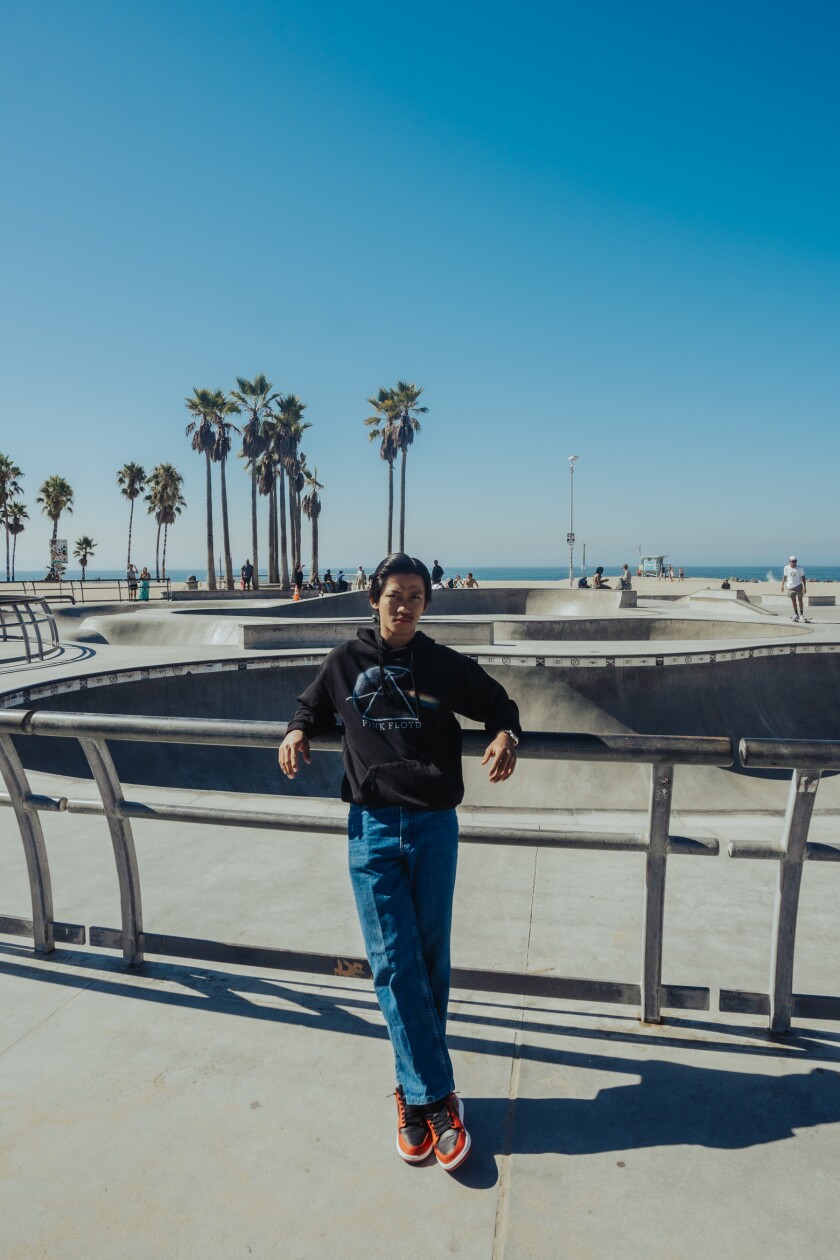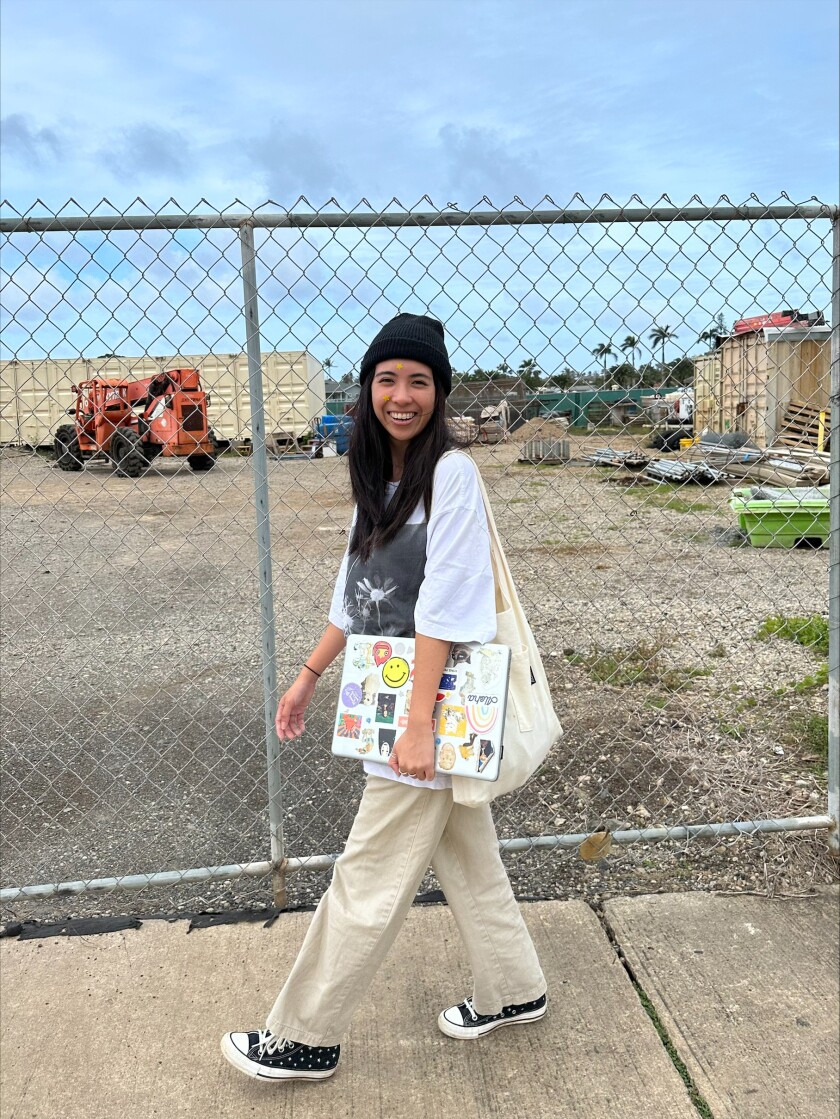BYUH students and a shop owner share how they got into thrifting and their experiences
Click here for the multimedia version of the story
According to Goodfair’s website, the concept of thrift dates back to the early 19th century when religious organizations and charities gathered second-hand clothes and sold them to raise funds for different causes.
Moreover, the website said it was not until the Great Depression occurred in the 1930s that thrift shopping gained widespread popularity in many countries.
Precious Paula Maguale, a sophomore majoring in marketing from the Philippines, said, “I got into thrifting because I get to find items that are unique, vintage and very cheap. It was also a form of bonding between my friends and siblings whenever we dressed up in our thrifted clothes.”
Personal expression through thrifting
Maguale said she got into thrifting because there were limited department stores in her area but a lot of small pop-up markets and thrift stores around her neighborhood. “Because of limited resources, my older sisters and I went to different pop-ups and markets to see what they offer. Little by little, we fell in love with things that we found and repeated.
“I have a lot of unique finds from thrift stores that led me to have different dress patterns or aesthetics whenever I pick and choose what to wear. This is a big factor because I have so much to choose from depending on my mood,” Maguale said.
Kris Kositwongsakul, a community member from Laie and owner of The Stand, a pop-up store, said he grew up in a thrifty household. He said his family was his biggest influence because it saves money for something more important than clothes. “Because of my upbringing, I carried the same tradition that my family had with my family now where I bring my kids and wife often to thrift stores,” he said.
Marvel Jacob Ariono, a freshman majoring in biology from Indonesia, said he discovered the world of thrifting back in high school after seeing the majority of his classmates wear nice and unique hoodies. “Aside from finding cheap clothes, I was able to make friends while I was thrifting. From then on, I went to different stalls and places with my friends,” he said.

Profit from pre-loved items
Kositwongsakul said he started selling thrifted clothes around the start of the pandemic. He said he has been a full-time high school teacher for 15 years and selling thrifted items was his side hustle. He said influences in social media like Instagram and YouTube made him resell thrifted goods. “Since I am already into clothes, fashion and thrift shopping, it made me want to hop on the trend and try it as my side hustle,” he said.
“It was a cool experience,” Kositwongsakul said. He said from the moment he bought a vintage USMC (United States Marine Corps) sweater for $4 and sold it for $20, he started rolling and continued his love for thrifting that he now combines with reselling.
“Besides regular and branded clothes, I look for vintage pieces like shirts, hats, pants, hoodies, jackets and anything that I could make a profit from,” he said.
Kositwongsakul said he follows online trends and sees what the current style is and tries to find these items in thrift stores or from other resellers before selling them at a lower price than the current trend market price.
“A lot of times there are similar items I get at an affordable price, rather than relying on what other sellers are selling them for, I make an average and decide on a price. I normally charge low, but still make a profit with some of my items so that I can get previous customers to come and buy more,” he said.
Stretching your dollars
Maguale said besides the limited stores in her neighborhood she also loved thrifting because of how cheap it was. She said the normal price of good quality clothes ranges from 15 to 200 Philippine pesos, which is around 30 cents to 4 U.S. dollars. “There are a variety of choices whenever I go to our local thrift stores and markets. If you are lucky enough, you can find branded clothes that look brand new,” she said.
Kositwongsakul said he stretches his income by reselling what he thinks is profitable to people. “There are things that we find at thrift stores that we use at home, like home decorations, a couple of household items and my kid’s Xbox,” he said.
Ariono said back in Indonesia, anything below 2,000 Rupia (less than 1 U.S. dollar) is considered cheap in their local thrift store. Because of how cheap it is, he said he was able to purchase items that he likes and clothes that he can wear to church, school, dates and anywhere he goes.

Future of thrifting
Maguale said, “Finding out that millions of clothes get discarded each year because of fast fashion makes me contribute to sustainability.” She said thrifting can give a second chance to pre-loved and still usable clothes while reducing the waste and carbon footprint associated with manufacturing “trendy” fast fashion clothing.
Kositwongsakul said the problem now with most thrift stores is they charge insurmountable prices on second-hand pieces. “Because of the trend, companies are now marking high prices for notable items like shirts, artifacts, jewelry and more. If the prices continue to go up, it would be difficult to keep up with the current market,” he said.
Maguale said thrifting is also budget friendly. She said if people are into fashion, it is the best way to find clothes and other useful things. She said that most items in-store are still useful and sustainable and can be “trendy” for a long time.
